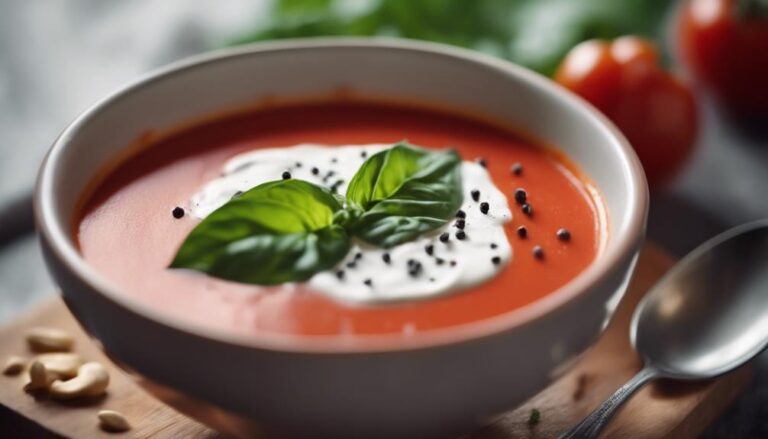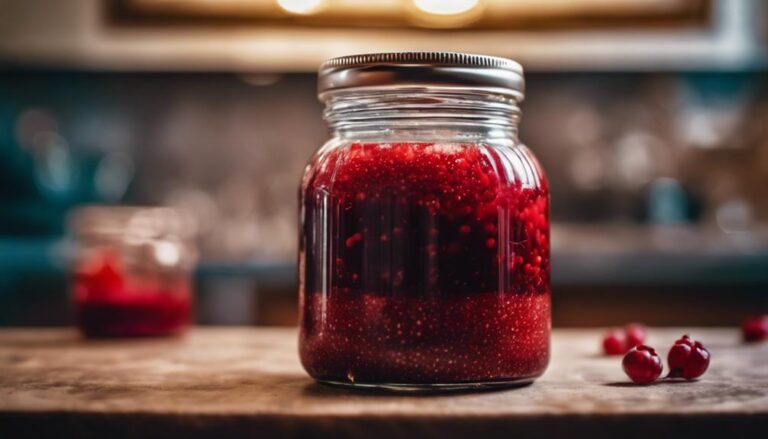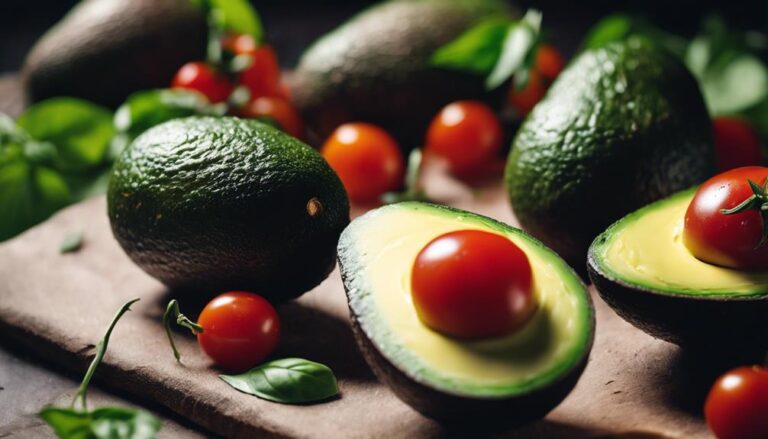Sous Vide Hummus for Creamy Perfection
Achieve creamy perfection with Sous Vide Hummus. Elevate your hummus game by ensuring a consistently smooth texture that traditional methods can't match. This innovative technique guarantees a velvety finish every time. Explore the world of Sous Vide Hummus to experience a new level of culinary excellence.
What You Will Learn Here
- Sous Vide technique ensures precise temperature control for velvety smooth hummus.
- Consistent cooking temperature enhances creaminess and flavor depth.
- Retention of nutrients and flavors in hummus due to controlled sous vide cooking.
- Homogenous mixture achieved for a refined and consistent hummus experience.
- Sous Vide method preserves natural flavors, ensuring a pleasing palate experience.
Origin of Hummus Variations
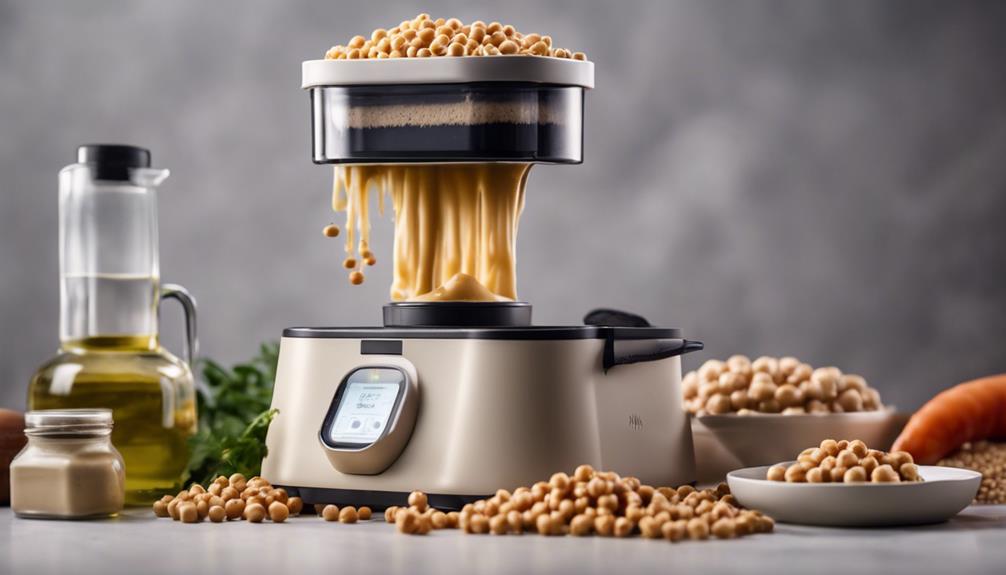
Explore the rich tapestry of hummus variations, each with its own unique story and flavor profile.
Uncover the roots of Lebanese hummus with its generous tahini and vibrant garnishes.
Discover the Israeli twist on hummus, adorned with chickpeas, paprika, and pine nuts, or venture into the Turkish 'humus' spiced with cumin, sumac, or red pepper flakes.
Hummus Origin Stories
Originating in the Middle East, hummus has evolved into a versatile dish with various regional adaptations and flavor profiles. Chickpeas are the star ingredient in this creamy dip, traditionally made by blending them with tahini, lemon juice, and garlic.
In the quest for the perfect texture, techniques like Sous Vide have been employed to achieve a velvety smooth consistency. While homemade hummus remains a staple, modern variations have introduced innovative twists using ingredients like roasted red peppers, sun-dried tomatoes, and spices such as cumin and paprika.
Toppings like olive oil, pine nuts, parsley, or sumac add both flavor and visual appeal. This rich history of hummus showcases its adaptability and continuous evolution into a beloved global delicacy.
Hummus Flavor Evolution
Amidst the diverse culinary landscape of the Middle East, hummus has undergone a flavorful evolution, with each region infusing its unique twist into this beloved dish.
Cooked chickpeas are the heart of this creamy bean spread, essential in creating the base for homemade hummus. The addition of fresh lemon juice brings a tangy brightness to the blend, enhancing the flavors of the earthy chickpeas.
Whether it's the creamy texture of Lebanese hummus or the diverse toppings found in Israeli variations, the essence of hummus lies in its adaptability to different palates and preferences.
Understanding the origins of these variations sheds light on the rich tapestry of flavors that make hummus a versatile and beloved staple in Middle Eastern cuisine.
Regional Hummus Varieties
In examining the evolution of hummus flavors across different Middle Eastern regions, the distinct variations in ingredients and seasonings highlight the diverse culinary identities shaping regional hummus varieties.
Lebanese hummus stands out for its creamy texture and delicate, fresh taste, while Israeli hummus often features colorful toppings like chickpeas, olive oil, and paprika.
Palestinian hummus takes a different approach, garnishing the creamy blend of cooked beans with olive oil, parsley, sumac, and pine nuts for an added depth of flavor.
These regional hummus varieties showcase the creativity and cultural influences that have shaped this beloved dish. From the creamy base of cooked beans to the diverse array of toppings, each region's take on hummus offers a unique and flavorful experience.
Key Hummus Ingredients
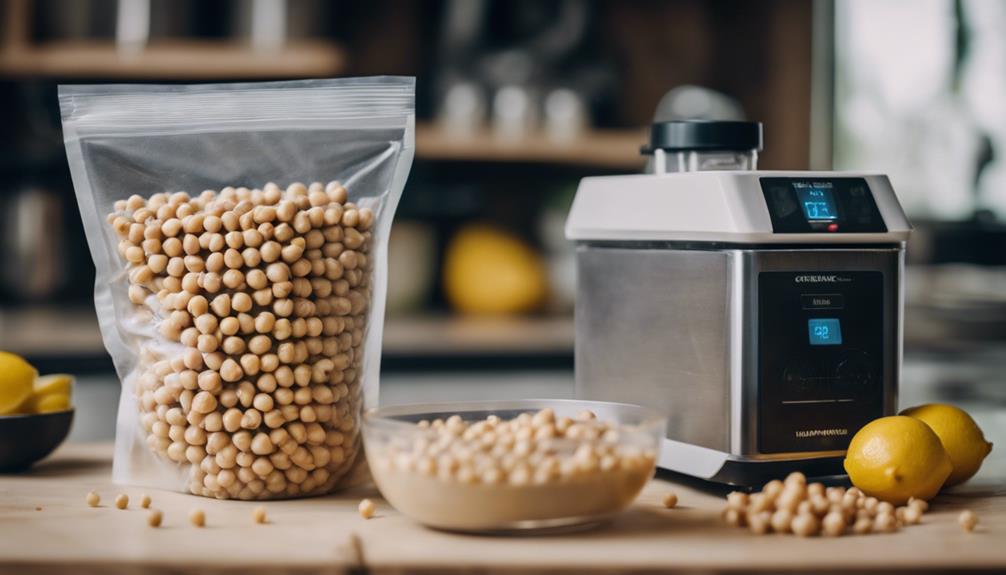
Among the essential components that form the foundation of a flavorful hummus dip, tahini, chickpeas, lemon juice, garlic, and olive oil play integral roles in creating a harmonious blend of textures and flavors.
- Tahini: Made from toasted ground sesame seeds, tahini adds a rich, nutty flavor profile to hummus, elevating its taste to new heights.
- Chickpeas: Also known as garbanzo beans, these creamy legumes are the star ingredient in hummus, providing a smooth texture and earthy undertones.
- Lemon Juice: Essential for its bright acidity, lemon juice not only balances the richness of tahini but also adds a revitalizing zing to the dip.
Each ingredient in hummus contributes uniquely to the overall taste experience, from the depth and complexity of garlic to the fruity and savory notes of olive oil. Understanding the role of each component allows for a more innovative and precise approach when crafting the perfect creamy hummus recipe.
Creamy Hummus Variations
Explore exciting variations of creamy hummus with sous vide bean hummus, a white bean hummus twist, and innovative sous vide hummus recipes to elevate your culinary creations.
These creamy hummus variations offer unique flavors, textures, and presentation styles that can impress your guests and elevate your dining experience.
Experimenting with different beans, seasonings, and cooking techniques can take your hummus game to the next level.
Sous Vide Bean Hummus
For achieving a luxuriously smooth and flavorful hummus base, contemplate harnessing the precise control of sous vide cooking with beans. Sous vide bean hummus guarantees even cooking of beans, resulting in a creamy texture ideal for making hummus.
Here are some key points to ponder:
- Precise Temperature Control: Sous vide helps beans retain their natural flavors, enhancing the taste of the hummus.
- Consistent Results: Using the sous vide method guarantees consistent results every time, perfect for achieving the desired smoothness in hummus.
- Rich and Velvety Consistency: Creamy bean hummus made through sous vide cooking offers a rich and velvety consistency, enhancing the overall flavor profile.
Sous vide bean hummus is a versatile base for various hummus recipes, dips, and spreads, making it a valuable addition to any kitchen.
White Bean Hummus Variation
Consider incorporating white beans for a creamy twist on traditional hummus, adding a subtle yet delightful flavor variation.
Using the sous vide method for white bean hummus helps achieve even cooking, resulting in a velvety texture that complements the milder taste of the white beans.
Here are three reasons why this creamy variation can elevate your hummus game:
- Creamy Texture: White beans blend smoothly in the sous vide, creating a luxurious and creamy consistency.
- Delicate Flavor: The white beans offer a softer flavor profile, perfect for those seeking a more subtle hummus taste.
- Versatile Option: White bean hummus provides a versatile alternative to classic chickpea hummus, suitable for various flavor enhancements and pairings.
Sous Vide Hummus Twist
To enhance the creaminess and flavor depth of your hummus, consider experimenting with sous vide cooking techniques. Sous vide cooking guarantees that your beans are evenly cooked, resulting in a perfectly blended mixture for your hummus.
When using a high-powered blender after sous vide preparation, you can achieve an incredibly smooth texture that traditional methods may struggle to replicate. This method allows for precise temperature control, enhancing both the flavor and consistency of your hummus.
Hummus Texture Enhancements
To enhance the texture of your hummus, focus on techniques like peeling chickpeas for a smoother consistency and adjusting water levels during blending for desired thickness.
Experiment with roasting garlic and incorporating different spices to create unique variations in texture.
Utilizing canned chickpea juice can also aid in achieving a more consistent and creamy hummus.
Texture Enhancing Techniques
Enhance the texture of your hummus by meticulously peeling chickpeas to guarantee a silky smooth consistency devoid of tough skins. When preparing your hummus, consider adjusting the lemon juice to achieve the perfect balance of tanginess and acidity. Adding a small amount of water during blending can help create the desired creamy texture in your hummus. Experimenting with different spices and flavorings allows you to craft unique variations with diverse taste profiles. Roasting garlic before incorporating it can enhance the flavor profile, providing a rich, caramelized taste.
| Texture Enhancing Techniques | Benefits |
|---|---|
| Meticulously peel chickpeas | Silky smooth hummus |
| Adjust lemon juice | Perfect flavor balance |
| Add water during blending | Creamy consistency |
| Experiment with spices | Diverse taste profiles |
| Roast garlic beforehand | Enhanced flavor profile |
Sous Vide Benefits
By harnessing the precision of sous vide cooking, you can elevate the texture of your hummus to new heights, guaranteeing a consistently creamy and velvety finish every time.
Sous vide provides evenly cooked chickpeas that complement a creamy hummus recipe. The controlled temperature in sous vide cooking ensures that the chickpeas are cooked uniformly, resulting in a smooth texture ideal for hummus.
Vacuum-sealed bags help retain the nutrients and flavors of the chickpeas, enhancing the overall taste of the hummus. This method of cooking beans prevents overcooking or undercooking, ensuring a perfect creamy consistency.
Sous vide allows the chickpeas to maintain their natural flavors, creating a velvety hummus that's unparalleled in texture and taste.
Flavor Infusion Methods
Infusing hummus with a medley of vibrant flavors can revolutionize its texture and taste profile, offering a delightful culinary experience. To make your hummus smooth and creamy, consider flavor infusion methods such as adding roasted red peppers, cumin, or lemon zest for unique variations.
Enhance the creaminess by using quality ingredients like olive oil and Middle Eastern yogurt. Experiment with different flavor profiles to cater to personal preferences and dietary needs.
For added depth and complexity, try incorporating enhancements like sumac or a blend of chickpeas and northern beans into your traditional hummus recipe. These innovative flavor infusion techniques will take your hummus to the next level, creating a truly irresistible dip for any occasion.
Final Thoughts
Considering the meticulous control over temperature and the resulting creamy texture, sous vide hummus offers a culinary experience that's both refined and consistent.
The sous vide cooking technique guarantees that the chickpeas are cooked evenly and thoroughly, leading to a velvety smooth texture that's perfect for blending into a rich and decadent dip or spread.
This method preserves the natural flavors of the ingredients, enhancing the overall taste of the hummus.
The smooth consistency achieved through sous vide cooking allows for a seamless blending technique, resulting in a homogenous mixture that's pleasing to the palate.
Frequently Asked Questions
Why Is Israeli Hummus so Smooth?
Israeli hummus achieves its smoothness through the careful selection of chickpea quality, precise blending technique, ideal tahini ratio for richness, and a drizzle of olive oil. These elements combine to create a creamy perfection unmatched elsewhere.
Why Is Homemade Hummus Not Creamy?
Guarantee creaminess in homemade hummus by meticulously removing chickpea skins, adjusting blending time, and maintaining the correct tahini ratio. Quality olive oil enhances texture. Focusing on these details will elevate your hummus to velvety perfection.
Why Does Ice Water Make Hummus Creamy?
To make hummus creamy, ice water plays a key role. Its cold temp prevents ingredients from thickening, aiding in emulsification for a smooth texture. This secret ingredient helps maintain freshness, enhancing the science behind achieving that perfect, velvety consistency in homemade recipes.
How Do You Make Store Bought Hummus Creamier?
To make store-bought hummus creamier, blend with a splash of olive oil or lemon juice. Increase creaminess by mixing in tahini paste or water. Drizzle olive oil before serving. Smooth texture with ice water in a food processor.
Conclusion
To sum up, utilizing the sous vide method for making hummus results in a creamy and perfectly textured spread that's sure to impress.
By carefully controlling the temperature and cooking time, you can achieve a smooth consistency that's unmatched by traditional methods.
Experiment with different variations and ingredients to create your own unique twist on this beloved dish.
Elevate your hummus game with sous vide for a truly exceptional culinary experience.






